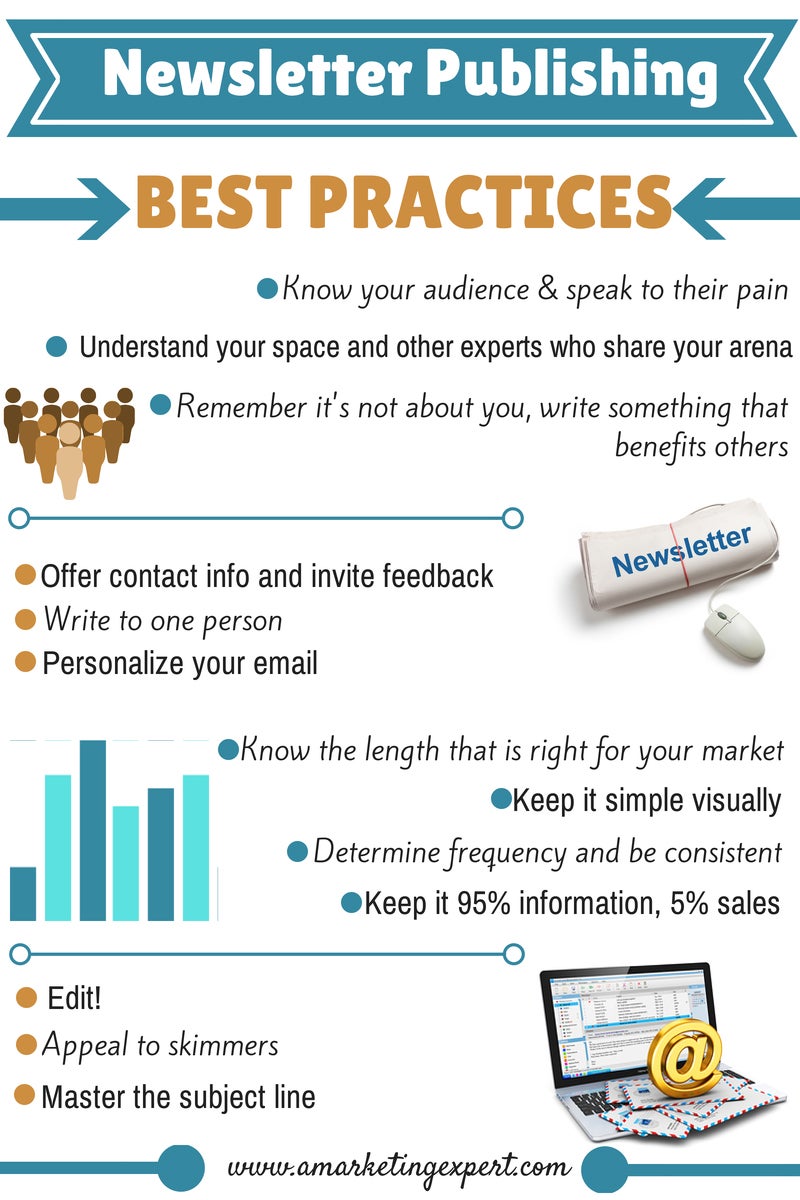Why You Need a Newsletter and How You Can Grow Your List (Infographic) Despite the proliferation of social-media sites, nothing can give you more exposure than a newsletter.
This story originally appeared on PR Newswire's Small Business PR Toolkit
Despite the proliferation of social media sites, nothing can give you more exposure than a newsletter. And, you'll own your newsletter and email list, unlike when you use social media sites that are operated by others. There's also the issue of reaching your fans. On Facebook, for instance, business page posts reach fewer than 1% of fans unless you pay for advertising. Meanwhile, other sites including Twitter, Pinterest, and LinkedIn, are jumping on the pay-for-play bandwagon. Having your own newsletter makes good business sense.
If you're concerned about the work involved, your newsletter doesn't have to be lengthy and time-consuming. It can be a brief write-up to let your followers know what's going on. The key is to consistently publish your newsletter and to make it professional. This means having a focused, edited newsletter that is sent to opt-in subscribers, that is, people who ask to join your list or sign up to receive your newsletter.
My company has had a newsletter for 14 years, and we use it to keep ourselves in front of our followers, provide useful tips, and let them know about what the company can offer them. It's one of the most effective business tools we have.
Related: Why Your Content Marketing Strategy Needs Real-Time Data
Convinced? Here's how you can start your own newsletter:
- Have sign-up forms throughout your website, starting with your home page. The left hand side of a web page is the "power side," so try to have the form available there.
- Offer an ethical bribe. This can be a free report, a gift card, or anything that your reader will appreciate.
- Use an email marketing system. Benefits include the ability to manage your subscriber lists as well as gather data on your newsletter's performance. Two sites to consider are Mail Chimp or Constant Contact, and both offer free accounts for up to 1,000 subscribers.
- Use auto-responders. This is a weekly or monthly reminder email, or it could be a way to thank subscribers for joining your list. We use an auto-responder "52 Ways to Sell More Books" that we send twice a month to our list.
After you start your newsletter, you'll want to increase the number of subscribers you have. These strategies will help you build your list:
Remember that it's all about your subscribers: The goal is to offer information that your audience values. Think about their hot buttons, their needs, and think about who they are and tailor your content accordingly.
Personalize your email: When you think about your subscribers, you'll offer a more authentic newsletter that they will appreciate. And the "from" line in your email should have your name – not your company's name, or your book, or product. Make your newsletter a relationship between you and your customers.
Read widely: Subscribe to other newsletters in your field. You'll get ideas, and learn more about your area of expertise. This will make you more effective in understanding your subscribers and their needs.
Be easy to find: Share contact information in your newsletter, and regularly encourage people to offer their perspective, tips and ideas, and suggestions for the newsletter.
Use attention-grabbing headers: Everyone gets plenty of email, so you want your newsletter to stand out. You want a subject line that isn't too long, and it has to respond to issues your readers care about.
Long or short? Keep in mind that many of your subscribers are inundated with emails, are pressed for time, and have short attention spans. If you see successful newsletters in your field that are longer, then you've got some options. Remember, too, that many people will read your newsletter on their phone or tablet and shorter may work better.
Keep on schedule: Weekly or monthly are common options; a daily newsletter may be more work than you can handle - and too much for your subscribers. You can always send out quick updates or special offers between issues so you stay in front of your following.
Editing is vital: Your newsletter is part of your public face. A newsletter filled with typos does not send a positive message to your subscribers. Make sure you read through the copy and check any links before you hit the send or schedule button.
Cater to reading habits: Many people scan their messages. Newsletters with short paragraphs, bullet points, and clear headlines are best.
Toot your own horn (a little): It's your newsletter, so you do want to promote yourself, but don't make it an issue full of sales pitches. Consider a breakdown of 95% information and 5% promotion. It's a great way to build credibility with your followers.
Related: Create a Company Blog Series
While social media is one way to stay in touch with your followers, the ever-changing rules make it difficult to maintain a regular presence. A newsletter is a much simpler, consistent way to reach your followers, with the added benefit that you own, and can grow, your subscriber list. You'll find the time spent managing and growing you newsletter is well worth it!
Written by Penny C. Sansevieri, CEO and founder of Author Marketing Experts, Inc.










